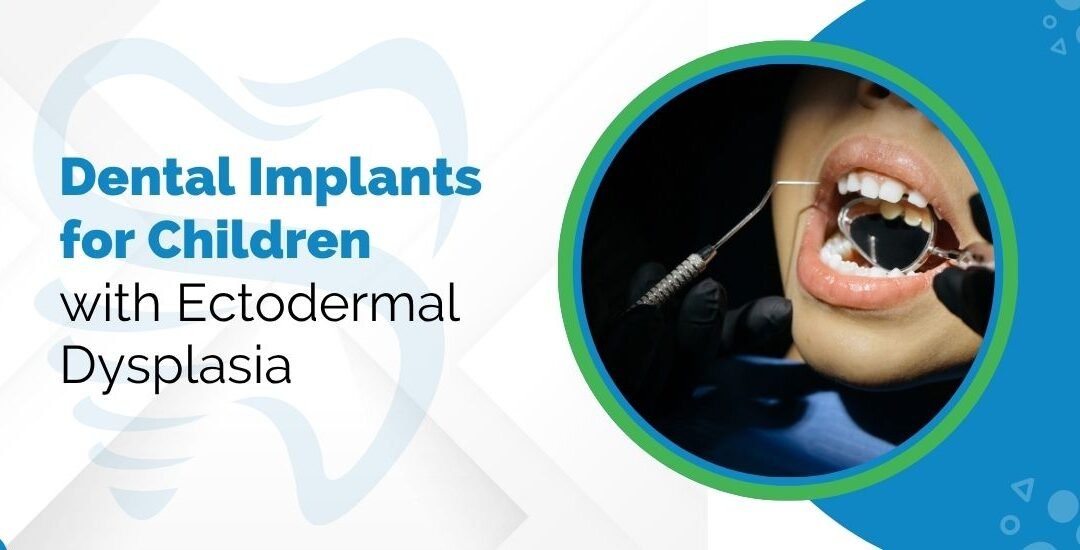Dental implants have revolutionized restorative dentistry. But for children with ectodermal dysplasia, they offer more than just function—they provide confidence, comfort, and normalcy.
“Every child deserves a smile that feels natural and functions well. With the right timing and planning, dental implants can restore that gift—even in complex cases like ectodermal dysplasia.” – Dr. Manjul Jain, an experienced dentist in Andheri, Mumbai.
At Metro Dental Speciality Clinic, advanced tools such as guided implant surgery, digital scanning, and diode laser technology ensure precision and safety, particularly important in pediatric dental care.
Let’s understand the reason behind this treatment
Why Dental Implants Are Considered for Children with Ectodermal Dysplasia

Ectodermal dysplasia is a group of genetic conditions that affect the development of teeth, skin, hair, and nails. In many cases, children either have missing teeth (hypodontia) or abnormal-shaped ones. This not only affects chewing and speech but also impacts social confidence.
Dental implants for children with ectodermal dysplasia offer a stable, long-term solution that looks and feels like natural teeth. Unlike removable dentures, implants integrate with the bone, offering a more permanent solution.
Explore safe, child-friendly implant solutions using advanced dental technology. Schedule a consultation to learn what’s best for your child
Challenges of Placing Dental Implants in Growing Children
Children’s jaws are still developing, which poses a significant challenge. Placing a dental implant too early can lead to complications like bone misalignment, implant sinking, or improper spacing as the child grows.
Additionally, children with ectodermal dysplasia may have less jawbone density, making it harder for implants to anchor securely. Bone grafting may sometimes be necessary, adding complexity to the case.
These challenges make treatment planning highly individualized and dependent on careful diagnostics and imaging.
Timing and Age Considerations for Implant Placement

However, every case is unique. Some may benefit from earlier intervention using temporary solutions while planning for permanent implants later.
A thorough clinical and radiographic assessment, including OPG scans and 3D imaging, is essential before making a decision.
Alternative Treatment Options Before Implants

Before a child is ready for dental implants, other prosthetic options may be considered. These include:
- Removable partial dentures: Easy to adjust as the child grows.
- Resin-bonded bridges: A less invasive option, though not suitable for all cases.
- Orthodontic space maintainers: Used to preserve bone structure and space for future implants.
These methods ensure that a child can eat, speak, and smile confidently, even before receiving permanent restorations.
Benefits of Dental Implants for Children with Ectodermal Dysplasia

Once the timing is right, dental implants offer multiple benefits:
- Stability: Implants do not shift like dentures.
- Aesthetics: They mimic the look and feel of natural teeth.
- Functionality: Restores full chewing and speech capability.
- Bone preservation: Prevents bone resorption in the jaw.
- Confidence: Enhances self-esteem in social settings.
These advantages make dental implants a game-changer in ectodermal dysplasia treatment.
Long-Term Care and Maintenance of Implants in Children

Like natural teeth, dental implants require proper hygiene and regular check-ups. This includes:
- Brushing and flossing around the implant area.
- Regular dental visits for professional cleanings.
- Monitoring bone levels and surrounding tissues.
Using digital scanning tools, professionals can track any changes and take preventive measures early. With appropriate care, implants can last decades—even a lifetime.
Conclusion
Dental implants for children with ectodermal dysplasia offer a life-changing solution, but timing, planning, and expertise are crucial. Consulting a skilled dentist like Dr. Manjul Jain, ensures a careful, evidence-based approach.
From diagnostics to aftercare, Metro Dental Specialty Clinic delivers trusted care backed by advanced technology and decades of experience.

